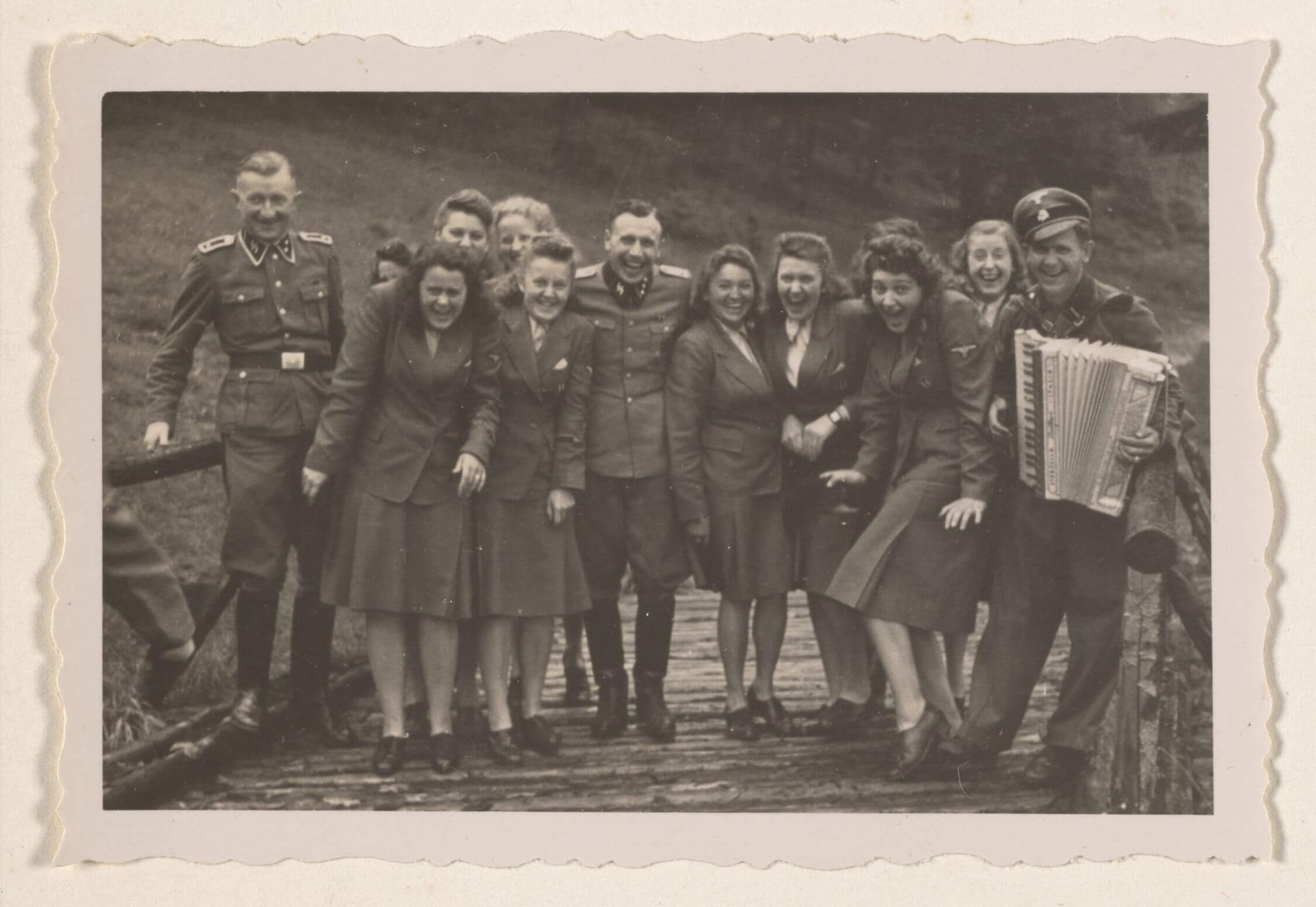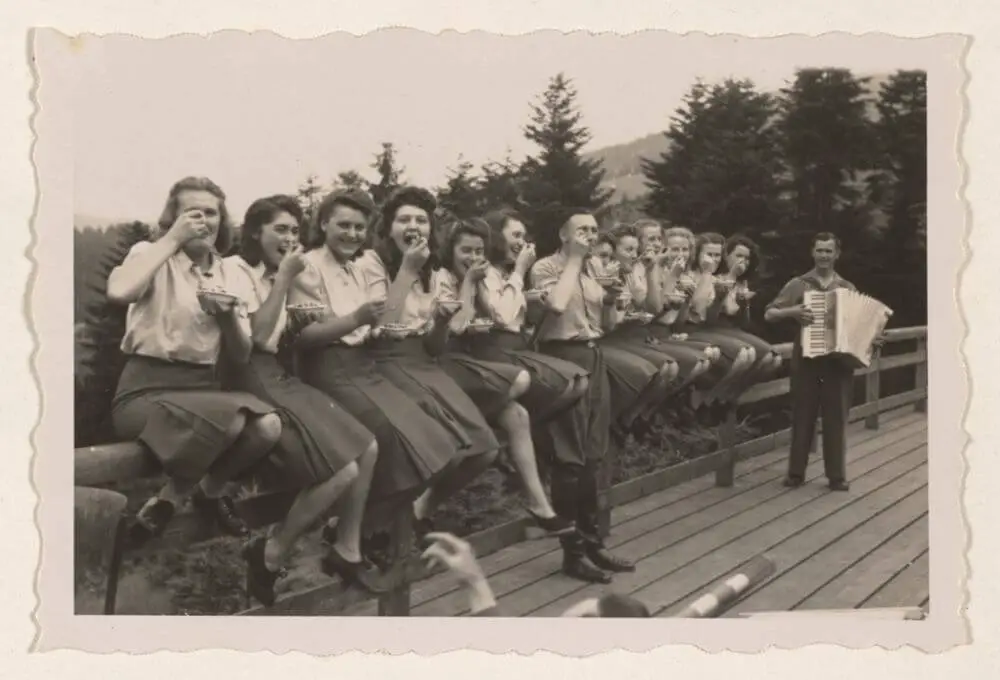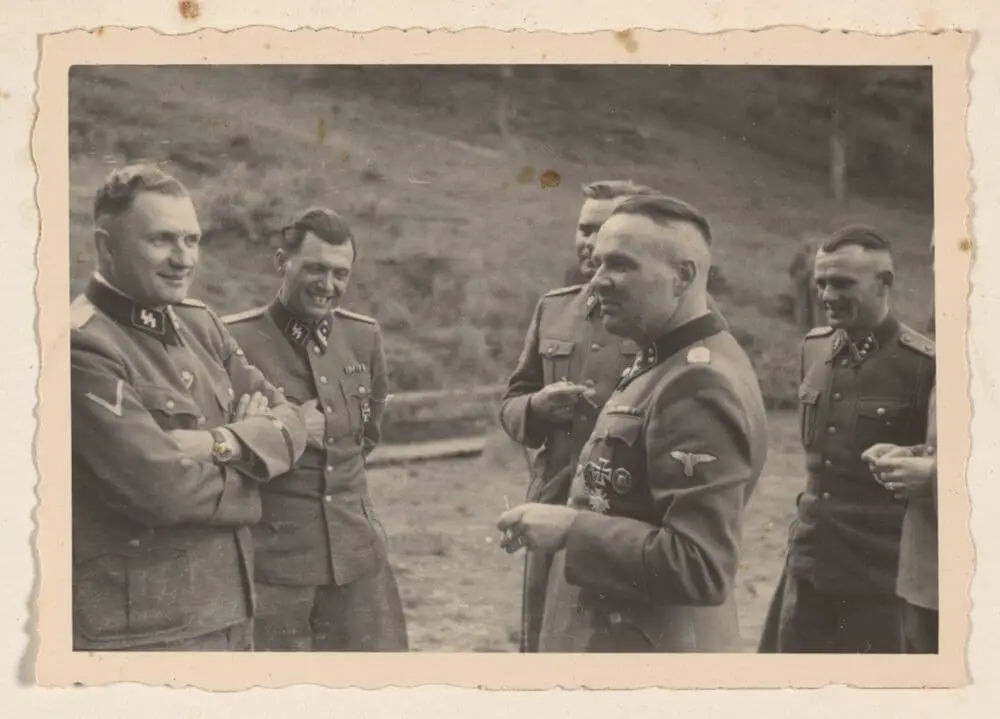The Höcker Auschwitz Album
(1944)

Women’s auxiliaries and SS officers enjoy music outside Auschwitz-Birkenau
The U.S. Holocaust Memorial Museum obtained an album containing photos of Auschwitz staff and officers, many taken during their leisure time. It was found by a U.S. Army Lieutenant Colonel, a World War II veteran assigned to the Counter Intelligence Corps (CIC) to investigate Nazi perpetrators for possible war crimes. He discovered the album in an abandoned apartment in Frankfurt in 1946 and kept it for decades before donating it to the museum in 2006 with the request that his identity not be revealed.
The album was owned by Karl Höcker, adjutant to Auschwitz’s third commandant, Richard Baer. Unlike the commonly recognized photos of concentration camp victims, the photos in the album were of the commanders and staff, some taken outside the camp during their time off duty and at a resort that was used to reward deserving staff.

The camp’s communication staff, the Helferinnen, taste blueberries during an outing
One photo with the caption, “Here there are blueberries,” served as inspiration for the play Here There Are Blueberries about the discovery of the album and the U.S. Holocaust Memorial Museum’s quest to learn more about the source of the photos and the lives of their subjects at the camp. That same picture also provoked interest in the little-known women who were sending messages back and forth from the camp to Nazi headquarters and what they must have known about the camp’s murderous activities.

Josef Mengele (with his hand in his jacket), Auschwitz Commandant Rudolf Höss (front row right), and other SS officers
The only other known album of photographs taken at Auschwitz is the Auschwitz Album,
which documents the arrival of the Hungarian Jews and the selection process used to determine who would live or die.
Höcker was one of 22 defendants, former SS officials, and guards accused of complicity in war crimes at the Auschwitz Trial held in Frankfurt, Germany, from December 10, 1963, to August 10, 1965. He was convicted and sentenced to seven years in prison.
Source: PJ Grisar, Hidden in this picture, the murder of 1.1 million Jews,
Forward, (April 23, 2024).
“Collections Highlight: Auschwitz Through The Lens Of The SS,” U.S. Holocaust Memorial Museum.
Photos: U.S. Holocaust Memorial Museum.


